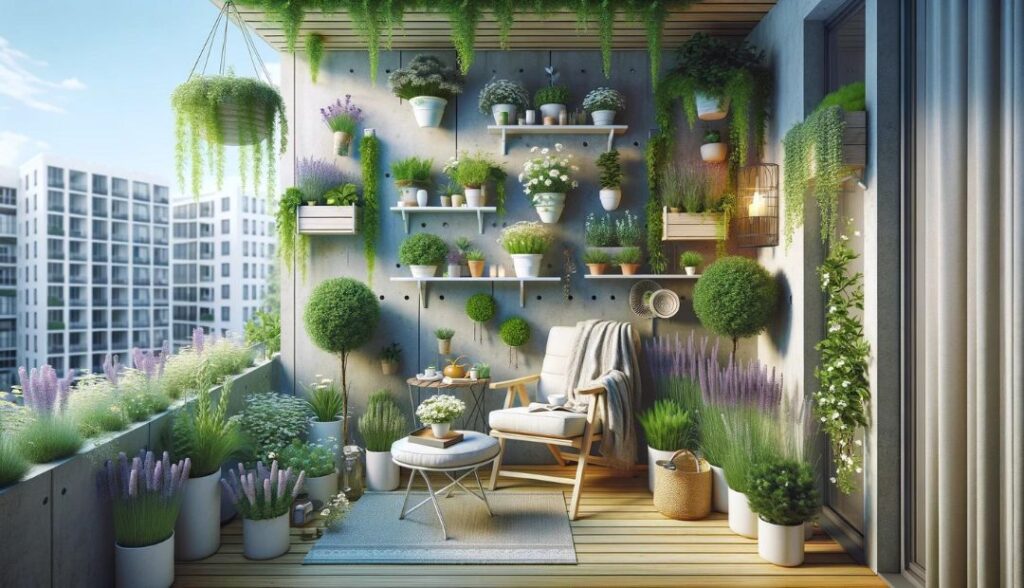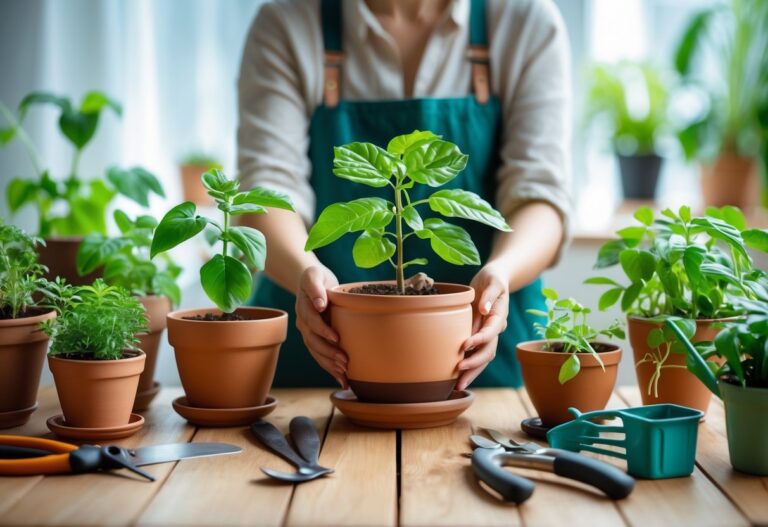A mindfulness garden is a carefully designed outdoor space that serves as a sanctuary for relaxation and mental well-being. The primary purpose of these gardens is to encourage peace, tranquility, and a deeper connection with nature. By incorporating various plants and layouts for relaxation, mindfulness gardens can become transformative spaces where individuals can retreat from the stresses of daily life and engage in reflective practices. The essence of a mindfulness garden lies in its ability to evoke a sense of calm and promote psychological benefits through interaction with natural elements.
The connection between gardening and mindfulness is rooted in the therapeutic effects of engaging with nature. Studies have shown that spending time in green spaces can significantly reduce stress and anxiety, enhance mood, and foster feelings of happiness. Gardening is not merely about plant cultivation; it is a mindful practice that encourages individuals to focus on the present moment. As they tend to their plants, individuals can immerse themselves in the sensory experiences of gardening, from the tactile sensations of soil to the soothing sights and sounds of plants. This engagement cultivates mindfulness, leading to a deeper appreciation of the beauty and complexity of life.
Creating a personal mindfulness garden allows individuals to tailor their outdoor spaces to meet their unique relaxation needs. Carefully selecting plants that resonate with personal preferences can enhance the psychological benefits associated with gardening. Additionally, the arrangement of these plants plays a crucial role in fostering an environment conducive to relaxation. A well-designed garden layout can create pathways or secluded nooks that invite contemplation and leisure. In cultivating such a personal retreat, one not only promotes mental wellness but also embraces the natural rhythms of growth and renewal that gardening embodies.
Choosing the Right Location for Your Garden

Creating a mindfulness garden requires careful consideration of its location, as the surroundings greatly impact the overall experience of relaxation and tranquility. First and foremost, assess the amount of sunlight the site receives throughout the day. Most plants thrive in sunny conditions, so a location that receives at least six hours of direct sunlight is often ideal. However, some plants, particularly those suited for shady environments, may still flourish in dappled light. Understanding the sunlight patterns in your chosen area will aid you in selecting appropriate plants that reinforce the calming atmosphere of your garden.
Another critical factor to consider is privacy. A mindfulness garden should be a serene oasis, removed from the bustle of daily life. Identify a space that offers seclusion, whether it be within a fenced backyard, a balcony shielded by plants, or a quiet corner of your home. Barriers such as hedges, trellises, or even larger potted plants can enhance privacy and create a more intimate setting, allowing you to fully immerse yourself in the process of gardening and relaxation.
Accessibility is likewise essential in determining the location of your mindfulness garden. Consider the ease with which you can access the area for planting, maintenance, and enjoyment. If your chosen space is a balcony or a small indoor garden, ensure that it is easily reachable and comfortable to navigate. Incorporating comfortable seating options will also encourage frequent visits, prompting you to engage with your plants and spend time practicing mindfulness.
Ultimately, selecting a tranquil setting that harmonizes with the aspects of your lifestyle will establish a strong foundation for your mindfulness garden. The right location enhances the overall experience and fosters a deeper connection with the plants, leading to a more peaceful and rejuvenating environment for relaxation.
Essential Plants for a Mindfulness Garden
Creating a mindfulness garden involves the careful selection of plants that foster relaxation, tranquility, and a deep connection to nature. Certain plants excel in promoting a calming atmosphere, making them ideal for layouts designed for relaxation. Fragrant flowers, soothing herbs, and visually pleasing foliage play significant roles in enhancing the sensory experience of a garden space.
Among the most sought-after plants for relaxation are lavender and chamomile. Both exhibit strong calming properties; lavender, with its soothing scent, is known for reducing anxiety and improving sleep quality. Chamomile, on the other hand, not only adds beauty but offers a sweet fragrance that promotes serenity. Include these plants in your mindfulness garden layout to create an inviting and peaceful retreat.
In addition to flowers, incorporating calming herbs such as sage and lemon balm can be beneficial. Sage is revered for its purification qualities, often burned during meditation practices, while lemon balm’s lemony fragrance uplifts the spirit and reduces stress. These herbs can flourish with minimal care, requiring well-drained soil and moderate sunlight.
Visually soothing foliage is equally important in a mindfulness garden. Consider integrating ferns and hostas for their lush greens which can instill a sense of calm through their serene appearance. Ferns, particularly, thrive in shaded areas and can add a soft texture to your layouts, while hostas offer a diverse range of leaf shapes and colors, creating visual interest with minimal upkeep.
The right combination of plants in your mindfulness garden can significantly contribute to an environment of relaxation and peace. By nurturing such plants and understanding their benefits, you will cultivate not only a garden but also a sanctuary for mindfulness and reflection, enhancing your overall well-being.
Designing the Layout of Your Mindfulness Garden

Creating a mindfulness garden requires thoughtful consideration of the layout to promote relaxation and tranquility. A well-designed garden layout can serve as a sanctuary, providing a serene environment for meditation and contemplation. One effective approach to achieving a calming atmosphere is through balanced symmetry, where plants and structures are arranged in a harmonious manner. This symmetry can create an illusion of order, making the space more inviting and mentally soothing.
Paths are another essential element in the design of a mindfulness garden. Curved pathways can lead visitors through the garden in a gentle, flowing manner, encouraging slower, more deliberate movement. These paths can be lined with soft, fragrant plants that enhance the sensory experience, making each step a mindful moment. Incorporating seating areas along the paths provides opportunities for reflection and relaxation. Benches or hammocks placed in secluded spots can invite visitors to sit and ponder, immersing them in the beauty of their surroundings.
Focal points within the garden are also crucial in guiding the eye and providing areas for contemplation. This could be a striking sculpture, a serene water feature, or a unique plant arrangement that draws attention and fosters a sense of wonder. Positioning these focal points strategically ensures that they enhance the overall design, providing a destination for the mind to rest. Additionally, placing plants in layers or groups can create visual depth, encouraging exploration throughout the garden.
When selecting plants for your mindfulness garden, consider those that not only contribute to visual appeal but also promote relaxation through their scents and textures. Incorporating fragrant herbs, soft foliage, and vibrant flowers can significantly enhance the sensory experience, creating a holistic environment conducive to mindfulness practices.
Incorporating Water Features
Water features can significantly enhance a mindfulness garden, providing both visual and auditory stimuli that promote relaxation. The gentle sound of flowing water has been shown to reduce stress and anxiety, making it a perfect addition to spaces designed for mindfulness and meditation. Options for incorporating water features into your garden abound, from larger ponds to smaller, more manageable designs such as fountains or water bowls.
Ponds can serve as a focal point within a mindfulness garden, inviting contemplation and reflection. When designing a pond, consider the size and location carefully to ensure it harmonizes with other plants and layouts for relaxation. Native plants around the pond can support local wildlife while contributing to the garden’s overall tranquility. Additionally, the reflective surface of water can visually expand the space, creating an illusion of depth that is beneficial for mindful practices.
Fountains, on the other hand, are ideal for those with limited space. A small fountain can easily fit into a zen garden or a corner nook, adding both movement and sound to the environment. The gentle trickling of water can mask background noise, creating an oasis of peace even in urban settings. Be sure to choose a fountain that complements the plants in your mindfulness garden; materials like stone or ceramic tend to blend well with natural surroundings.
Small water bowls are another excellent option for enhancing your gardening experience. They can be placed on tabletops or integrated into raised beds, offering a simple yet effective way to bring water into your layout. Adding a few aquatic plants or floating candles can also create a serene focal point during meditation sessions.
In conclusion, integrating water features into your mindfulness garden can significantly enhance the overall atmosphere, promoting a sense of calm and relaxation. By selecting the right type of water element, you can create a harmonious environment that beautifully complements your plants and the principles of gardening focused on mindfulness.
Creating Retreat Spaces Within Your Garden

Designing a mindfulness garden involves creating areas that promote relaxation and contemplation, acting as retreats from the hustle and bustle of daily life. Incorporating dedicated spaces for sitting and reflection can enhance the overall experience of your garden, allowing one to unwind amidst the beauty of plants.
One effective way to achieve this is by establishing cozy nooks using natural materials that blend seamlessly into the garden’s aesthetic. Consider placing benches or reclining chairs strategically among flowers and shrubs. For instance, hardwood benches can provide a rustic charm and can be placed under the shade of a tree, creating a perfect spot for peaceful moments. Similarly, a hammock strung between two sturdy trees invites serenity and leisure, enhancing the mindfulness garden experience.
When selecting locations for these retreat spaces, think about areas that receive morning sunlight or afternoon shade. These spots not only offer comfort but also allow for varied experiences throughout the day and seasons. Additionally, the use of soft cushions or decorative throws can add a homely touch, encouraging longer stays in these peaceful corners.
To further accentuate relaxation, it would be beneficial to incorporate elements such as gravel pathways leading to these retreats. These paths can guide visitors through the garden and prepare them for the transition into relaxation. The sound of gravel crunching underfoot adds a sensory aspect to the experience. Surrounding these spaces with fragrant plants and calming visuals fosters a tranquil environment ideal for mindfulness practices.
Ultimately, the integration of intentionally designed retreat spaces within your garden can greatly enhance its overall ambiance, fostering a deep connection with nature and facilitating moments of reflection and calm. Elements such as chairs, benches, or hammocks combined with thoughtfully arranged plants will invite individuals to immerse themselves in their surroundings, making the mindfulness garden a true haven for relaxation.
Seasonal Care and Maintenance for Your Mindfulness Garden
Maintaining a mindfulness garden requires attention throughout the seasons, ensuring that the plants thrive and contribute to an atmosphere of relaxation. The care and maintenance process not only enhances the beauty of the garden but also cultivates a mindful practice that fosters a deeper connection with nature. Each season presents unique tasks and opportunities to engage with your gardening efforts.
In the spring, consider initiating your gardening activities with a thoughtful assessment of the soil and the needs of your plants. This is an excellent time to incorporate new flora into your layouts for relaxation, selecting vibrant varieties that evoke tranquility. Ensure that your soil is well-aerated and enriched with organic compost, providing the perfect foundation for new growth. Regular watering and light pruning of existing plants will encourage rejuvenation, allowing the garden to flourish.
Summer calls for diligent care as the heat can stress many plants. Focus on consistent watering schedules and consider applying mulch to retain moisture in the soil. Additionally, this season provides an opportunity to deadhead flowering plants, promoting further blooming and an extended display of color. Take time during these warm evenings to witness the beauty of your mindfulness garden, reinforcing the relaxation it offers.
As autumn arrives, transition your gardening practices towards preparing for cooler temperatures. This is the time for planting perennials that will return each year, adding structure and seasonal interest to your garden. Clean up any debris and consider cutting back older growth to promote healthy regrowth in the spring. Engaging in these actions allows reflective moments, turning maintenance work into a mindful practice.
Winter months often demand less physical work but provide an opportunity for introspection. Evaluate the success of your gardening layouts for relaxation, noting what worked and what could be improved. Maintaining the garden’s integrity during dormancy includes protecting vulnerable plants with mulch and ensuring proper drainage to prevent waterlogging. These mindful considerations will set the foundation for the next vibrant cycle of growth.
Engaging Your Senses in the Garden

Creating a mindfulness garden involves more than just selecting the right plants; it is about engaging all your senses to cultivate a space for ultimate relaxation and tranquility. When designing your garden, consider the sensory elements that each plant can contribute, thereby enhancing your overall experience. Each facet of the garden can invoke different feelings and thoughts that encourage mindfulness.
Start with scent, an incredibly powerful sense that can evoke strong memories and emotions. Consider incorporating aromatic herbs such as lavender, rosemary, or mint, which not only offer delightful fragrances but can also be used in daily activities such as cooking or tea-making. Floral options like jasmine or sweet peas can enhance the olfactory experience and create pleasant pathways. Positioning these plants strategically can draw you into different zones of your garden, encouraging exploration and deeper contemplation.
Next, focus on texture. Incorporating a variety of materials and surfaces can create tactile interest. Use leaves from ferns, the rough bark of trees, or the smoothness of stone pathways to encourage a sensory dialogue through touch. Ground covers like lamb’s ear provide a soft area to walk on or rest your hands. When your hands or feet connect with these textures, it can ground you, fostering a greater connection to your surroundings.
Finally, consider sound as an essential aspect of the sensory experience in your mindfulness garden. Selecting plants that produce sound when interacted with, such as bamboo or ornamental grasses that sway gently in the breeze, can create a serene auditory atmosphere. Additionally, placing wind chimes or a small water feature enhances the garden’s ambiance, promoting relaxation and meditation.
By integrating sensory elements such as scent, texture, and sound, your mindfulness garden will not only invite you to engage with nature but also offer a profound space for self-reflection and tranquility.
Conclusion: The Journey of Mindfulness Through Gardening
Creating your own mindfulness garden is not just about selecting the right plants or appealing layouts; it symbolizes a transformative journey towards serenity and relaxation. Throughout this blog post, we have explored how gardening can serve as a powerful means of embracing mindfulness. Engaging with nature allows individuals to experience a profound sense of presence, which can help alleviate stress and enhance overall well-being.
The act of planting, nurturing, and observing the growth of plants catalyzes a meditative state, drawing attention away from the chaos of everyday life. When carefully selecting plants that resonate with personal aesthetic preferences and relaxation needs, individuals are not only fostering a visually appealing outdoor space but also creating an environment conducive to mindfulness practices. The combination of the right flora, serene layouts for relaxation, and the intentional act of gardening can lead to an enriching and calming experience.
As readers consider embarking on their own gardening journey, it is essential to recognize that this process is filled with learning opportunities. Understanding the varying needs of plants and harmonizing them with personal preferences lays the groundwork for achieving a mindfulness garden. Moreover, cultivating patience and observation skills while tending to plants can enhance one’s mindfulness practice, allowing for deeper reflection and connection with nature.
In conclusion, the creation of a mindfulness garden invites individuals to engage fully with their environment. This holistic approach offers the potential for emotional and psychological healing through consistent connection with the earth. By taking the first step—whether it be planting a single flower or designing an entire garden layout—readers are encouraged to embrace the journey of gardening as a pathway to mindfulness and relaxation. The fruits of this labor not only benefit the physical space but also enrich the mind and spirit.
You can check some mindfulness white noises here:
Amazing Sound Escapes: https://www.youtube.com/@AmazingSoundEscapes
Magical Nature Healing: https://www.youtube.com/@MagicalNatureHealing




[…] in a bit of mindfulness during massage helps you really tune in to the sensations. It’s a small thing, but it can make […]